In the manufacturing industry, effective hoisting and lifting equipment is essential for operational efficiency and worker safety. Whether you need to move heavy machinery, raw materials, or finished goods, having the right equipment can make a significant difference. At Columbus McKinnon, we offer an extensive range of manual and powered chain and wire rope hoists suitable for overhead, workstation, and jib cranes. We understand that each environment has unique lifting requirements, from small-scale workshops to large factories. That's why our industrial lifting equipment is designed to cater to your specific needs, improving the safety and efficiency of your operations.
Contact Our Manufacturing Hoisting and Lifting Divison to Discuss Your Application Today
Manual hoists are hand-operated lifting devices that offer a simple yet effective way to raise and lower loads. These hoists are particularly suitable for light loads requiring short lifts. They are especially useful in applications where power sources are unreliable or unavailable. Manual hoists don't need a power supply, allowing them to be used in a wide range of locations if they can be anchored securely. Moreover, they are highly portable, making them ideal for temporary applications. Manual hoists offer a cost-effective, mobile, and durable solution for light lifting applications that require precise positioning.
Browse all Manual Hoist Options
Our electric hoists offer an economical and reliable lifting solution with numerous benefits. Compared to pneumatic hoists, electric hoists have a lower purchase price and do not require the additional expense of an air compressor. One key advantage of electric hoists is their low noise level during operation, making them ideal for applications requiring quiet operation. They are widely preferred for general lifting applications, provided that suitable electric power is available. Our electric hoists can even be customized with special motors and controls for use in hazardous areas. Additionally, they offer flexibility in adapting to various load sizes and configurations, enhancing versatility.
View Our Electric Hoist Options
Air hoists, also known as pneumatic hoists, use compressed air as their power source. These hoists are the perfect solution when electricity is impractical or unavailable. Air hoists are capable of handling long lifts and high-duty cycles, making them suitable for a wide range of applications. Equipped with self-cooling air motors, they can run almost indefinitely, making them popular for uninterrupted performance. Air hoists are not only lighter than their electric counterparts but are also easy to transport and handle. Additionally, they offer a safer option for use in hazardous areas with flammable gases or dust, eliminating the risk of electrical arcing.
Find The Right Air Hoist
Electric and air chain hoists utilize a motor to power the lifting mechanism. These hoists are ideal for applications that require frequent, quick lifts and are generally more affordable than wire rope hoists. Due to their smaller physical size and maneuverability, they are better suited for lightweight lifting and positioning applications, typically limited to a load capacity of 5 tons or less. However, they may not be suitable for lifting heavy loads over long distances, as they can be prone to overheating and wear.
Browse Our Electric and Air Chain Hoist Options
Wire rope hoists are heavy-duty, reliable lifting solutions that use wire rope as the lifting medium. They wrap the cable around a grooved drum to perform lifts and can be powered manually, electrically, or pneumatically. Wire rope hoists are versatile across different industries and can handle heavy loads, making them essential in heavy machinery manufacturing facilities. They are corrosion-resistant, making them suitable for use in extreme environments with unpredictable weather and environmental conditions. Wire rope hoists can dissipate heat generated from extended usage, ensuring top performance in demanding lifting applications.
View Our Wire Rope Hoists
Overhead Cranes for Manufacturing
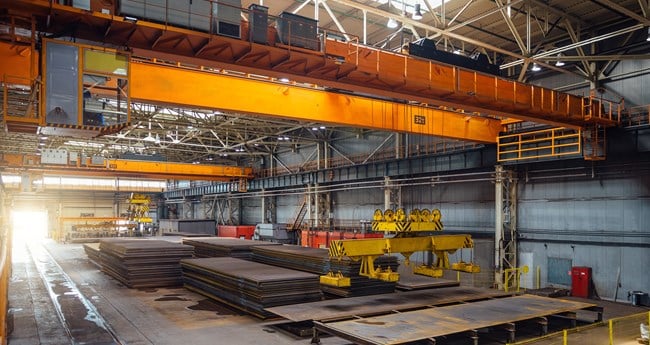 Overhead cranes are pivotal in enhancing operational efficiency and ensuring worker safety in the manufacturing industry. These cranes consist of a bridge that can travel the entire length of the facility, supported by end trucks running on a rail system attached to the ceiling. Overhead cranes can be customized to meet specific application requirements, including capacity, lifting height, and speed. They are particularly well-suited for use in large factories, warehouses, and construction sites where heavy loads need to be lifted and moved. For example, overhead cranes can effortlessly lift and transport large steel beams on a construction site or heavy machinery in a manufacturing plant.
Overhead cranes are pivotal in enhancing operational efficiency and ensuring worker safety in the manufacturing industry. These cranes consist of a bridge that can travel the entire length of the facility, supported by end trucks running on a rail system attached to the ceiling. Overhead cranes can be customized to meet specific application requirements, including capacity, lifting height, and speed. They are particularly well-suited for use in large factories, warehouses, and construction sites where heavy loads need to be lifted and moved. For example, overhead cranes can effortlessly lift and transport large steel beams on a construction site or heavy machinery in a manufacturing plant.
The primary benefits of overhead cranes include easy access to hard-to-reach areas, significantly improving operational efficiency and productivity. Additionally, overhead cranes offer precise and controlled movements, ensuring safe and reliable handling of heavy loads. They also enhance worker safety by minimizing the need for manual lifting, reducing the risk of injuries. Equipped with advanced safety features like overload protection and anti-collision systems, overhead cranes prevent accidents and equipment damage. With their precise movements and advanced safety features, overhead cranes provide a reliable, high-power option for handling heavy loads in various industrial applications.
Learn More About Our Overhead Crane Kit Solutions
Choosing the appropriate industrial lifting equipment is crucial to maintaining a safe and efficient work environment in manufacturing. Consider essential factors such as load capacity, lifting height, and frequency of hoist usage when selecting the correct equipment. By exploring the different types of hoists available and their features and benefits, you can identify the perfect hoisting equipment to match your unique manufacturing requirements.
APAC - English - EN


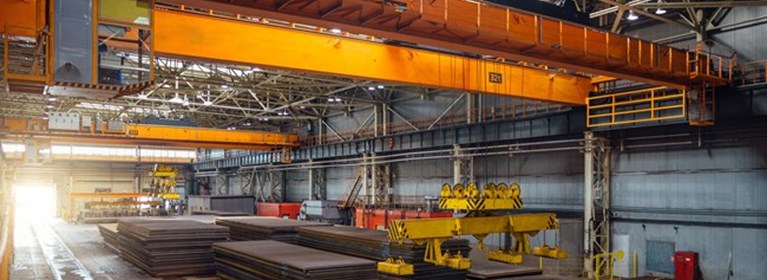
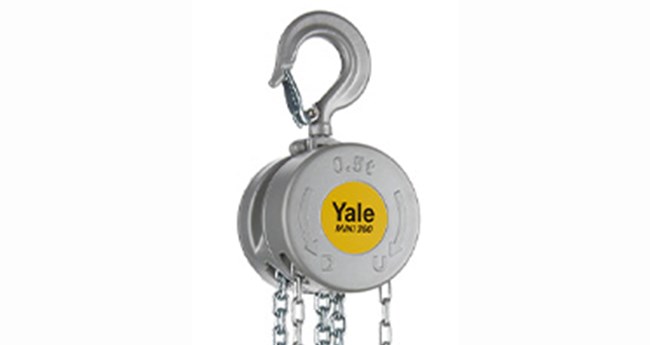
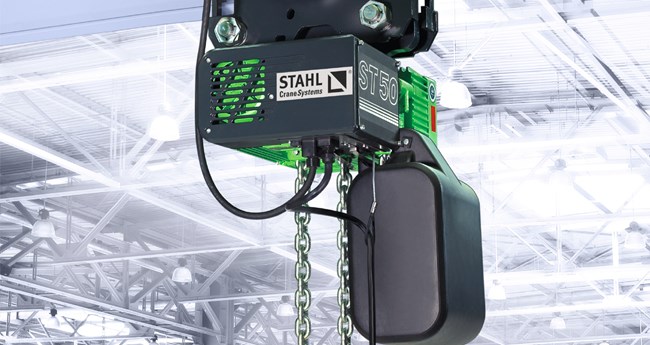

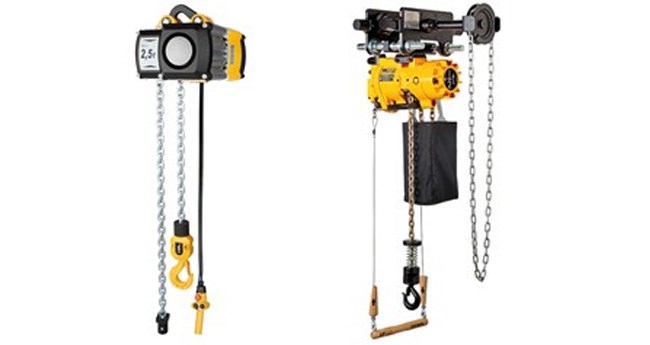

 Overhead cranes are pivotal in enhancing operational efficiency and ensuring worker safety in the manufacturing industry. These cranes consist of a bridge that can travel the entire length of the facility, supported by end trucks running on a rail system attached to the ceiling. Overhead cranes can be customized to meet specific application requirements, including capacity, lifting height, and speed. They are particularly well-suited for use in large factories, warehouses, and construction sites where heavy loads need to be lifted and moved. For example, overhead cranes can effortlessly lift and transport large steel beams on a construction site or heavy machinery in a manufacturing plant.
Overhead cranes are pivotal in enhancing operational efficiency and ensuring worker safety in the manufacturing industry. These cranes consist of a bridge that can travel the entire length of the facility, supported by end trucks running on a rail system attached to the ceiling. Overhead cranes can be customized to meet specific application requirements, including capacity, lifting height, and speed. They are particularly well-suited for use in large factories, warehouses, and construction sites where heavy loads need to be lifted and moved. For example, overhead cranes can effortlessly lift and transport large steel beams on a construction site or heavy machinery in a manufacturing plant.